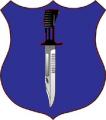Can Army artillery units hit the side of a barn? Maybe not, according to a troubling internal memo sent this month to Army Chief of Staff George Casey by three former brigade commanders.
“The once-mighty ‘King of Battle’ ” is a “dead branch walking,” write the active-duty colonels in the five-page document obtained by National Journal. With “growing alarm,” they describe “deterioration” in artillery readiness to perform its most basic missions. In training, “firing incidents [occur] during every rotation”; “crew drills are very slow, and any type of [disorder] halts operations”; and, absent instructor intervention, “most” cannon platoons would have fired in unsafe conditions, the memo says.
The wars in Iraq and Afghanistan have drawn experienced artillery troops into other jobs—like infantry and transportation—where soldiers are badly needed, the authors write. Ninety percent of fire-support personnel have been reassigned, leaving behind fewer than 10 percent certified for the mission.
“General Casey seeks out and appreciates receiving feedback [from] commanders and soldiers in the field,” said an Army spokesman, who declined to comment on the memo’s specifics.—Elaine Grossman






 "A Sherman can give you a very nice... edge."- Oddball,
"A Sherman can give you a very nice... edge."- Oddball, 









Bookmarks